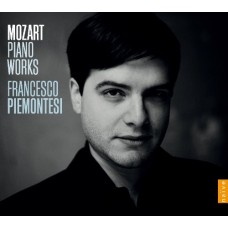莫札特:鋼琴奏鳴曲 Mozart:Piano sonatas
"Over the next few years this disciple of Brendel will be dedicating his time to Mozart. In fact, he is embarking on the complete sonatas of Mozart, which he will perform at Wigmore Hall, London, before pursuing the complete concertos. This recording marks but the beginning of this great Mozartian's ambitious project. “It's surely one of the composers I have been the most connected to, since ever. Everyday, I spend about half an hour, thinking about Mozart. Performing those piano works is a huge task since they gather so many dimensions of Mozart’s music in just an instrument: opera, chamber music and so on. However, it provides a great, sometimes physical, satisfaction. […] “There is a big misunderstanding about those solo works. They are generally less considered than the concertos, in which the orchestral music is such a great support to the soloist than it makes the works brighter. This is an important battle in my life: show that those sonatas and rondos are among the best written pieces in the piano repertoire of all times. […] “For this recording, I wanted a coherence, I wanted to choose pieces from the earlier period, like the Dürnitz Sonata, and also include the K533 sonata, which is one of the most complex of all, with connections with Bach's music. Also, I intended to have the three rondos together on the same recording - the last movement of K533 being one of them. Connections between keys of the works was also an important point in my choices. […] “The fantaisie in D minor is one of the most-well known works of Mozart. It is unfinished and the manuscript was lost. It is a German composer, Müller, that added the dozen of bars that were missing. The complexity of that work lies on the many changes of tempos and moods in the same work: darkness, melancholy, hope, drama…”"
編號 |
曲目 |
長度 |
作詞 |
作曲 |
演奏 |
樂團 |
演唱 |
指揮 |
試聽 |
|---|


